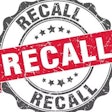The Association of American Feed Control Officials (AAFCO) held its "mid-year" meeting on January 8-10, 2014, in New Orleans, Louisiana, USA. While the city (along with much of the rest of the country) was experiencing unusually cold weather at that time, temperatures in the meeting room were kept elevated by heated discussion over several controversial items.
The Business Session is held on the first day of meetings, and includes voting by the full AAFCO membership on proposals passed by the various committees from prior meetings. The board of directors had recommended rejection of new tentative ingredient definitions for "bovine colostrum" and "dried bovine colostrum" as brought forth from the Ingredient Definitions Committee. Most often, the membership follows the recommendations of the board, but this time, it approved the definitions by sizable margins.
With this final action, these ingredients are now allowed for use in animal feed products (including petfoods and treats). However, the new definitions do not provide for any claims regarding the effect of colostrum on immune function for a product that was not a USDA-licensed biologic.
While strongly contested by some factions of the industry, the membership did follow the board's recommendation by approving an amendment to the Model Bill to provide for civil penalties, i.e., monetary fines, as another enforcement tool. Notably less controversial was final passage of the amendment to Model Pet Food Regulation PF3(b)(1). With this change, any ingredient or combination of ingredients (not just those derived from animal, poultry or fish as was restricted previously) that constitutes at least 95% of the formula can be used to form a petfood product name without further qualification.
One item passed by the membership in the Business Session, but which in retrospect may have been done without due discussion, was a seemingly innocuous change to the header of the Feed Terms section of the Official Publication. Its primary intent was to address the controversial practice of combining a common or usual food ingredient name with a "part" feed term to devise an ingredient name that was not otherwise AAFCO-defined (e.g., "pea protein," "oat fiber"). However, the new header also stipulates that "process" terms can only be used in the ingredient list if the base ingredient is not nutritionally altered by that process.
That's potentially good news for process terms such as "fresh," which was defined many years ago for this very reason, but objectionable by some states as a "quality or grade" designation. However, many other defined processes do in fact change the nutritional composition. Does this mean "deboned chicken," "malted barley" or "dehulled sunflower seeds" will now be unacceptable? Even physical processes that do not change the nutrient composition, such as simple grinding, can affect the availability of nutrients in an ingredient. How states will interpret and enforce this new language will be interesting.
In other news, the proposed revision to the AAFCO Dog and Cat Food Nutrient Profiles has hit another snag. The Pet Food Committee had passed its final version last year, and the Model Bill and Regulations Committee accepted those proposed changes at this meeting. Usually, the next step would be for the board to review and make a recommendation for the full membership to vote on the item at the next scheduled meeting. However, due to a controversy regarding procedural issues relative to the maximum calcium level in all-life-stage dog foods, the Pet Food Committee will ask to revisit the issue before it moves forward. The issue at hand will be more fully discussed in an upcoming column. In the interim, the revisions to the dog and cat food feeding trial protocols should be moving up for a full vote as planned.
The Pet Food Committee accepted revisions to the AAFCO Pet Food and Specialty Pet Food Model Regulations Label Review Checklist as proposed by a working group comprised of regulatory, industry and consumer representatives. The checklist has proven to be a useful tool for both feed control officials and petfood companies. The working group's next task is to update the AAFCO Pet Food and Specialty Pet Food Labeling Guide, last revised in 2008.
The committee also entertained a proposal to allow for carbohydrate-related claims on petfood labels. Substantiation of the claim would be based on a label statement for Nitrogen-Free Extract (NFE) content, similar in format and based on the same data needed to make a calorie content statement. This item will be revisited at the annual meeting.
Finally, the Ingredient Definitions Committee accepted tentative definitions for various pea fractions, including pea protein, pea fiber and pea starch. Although tolerated for use in petfoods for years, these ingredients have recently been subject to objection by some states because they were never AAFCO-defined, but rather contrived from the Feed Terms (see above).
Regardless, assuming these definitions are accepted by the full membership, objections to their inclusion in petfoods should abate. However, only certain processes would be allowed under the proposed definitions (e.g., dry-milling only), so not all pea fractions available on the market today would be acceptable.



















